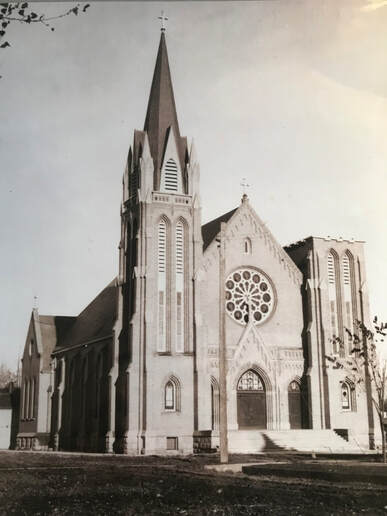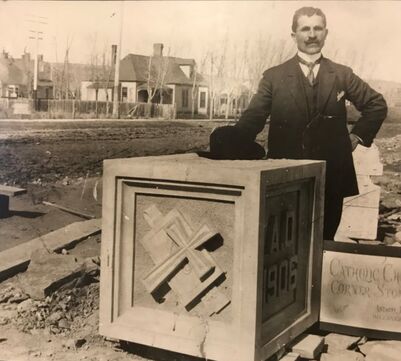About Us
|
Several attempts were made by Native Americans to get the “Blackrobes”, the Jesuits, to come to Montana. On March 27, 1840, Fr. Peter John DeSmet, S.J. started out on his significant westward journey. Fr. DeSmet celebrated the first Mass to be offered on July 26, 1840, near what is today called Three Forks, Montana. After a brief visit, Fr. DeSmet returned to St. Louis only to return the following year with two more priests and two Jesuit lay brothers. On September 24, 1841 the missionaries arrived at the home of the Flatheads in the Bitterroot Valley, about 50 miles south of present day Missoula. The first foundation set up by Fr. DeSmet is known today as St. Mary’s Mission. Many missions soon began to be established in other areas of Montana, and when gold was discovered in several counties in 1862, that really began the history of White emigration to Montana.
In 1883, the Holy See established the Vicariate of Montana, and a year later the state of Montana was made a diocese by the Holy Father with Helena named as the See city. At that time Montana had a population of 40,000 people which included 16 priests, 16 Catholic Churches, 4 schools, 4 hospitals, and a Catholic population of around 15,000. Billings began its history in the year 1882 when the site of the town of Coulson was moved from the banks of the Yellowstone River to be nearer the railroad tracks traversing southern Montana. On April 24, 1886, the few, but fervent Catholics of Billings created a church building committee and purchased four lots for $100 on 33rd Street North and 1st Avenue. A church was built and dedicated in honor of St. Joachim, the father of Blessed Virgin Mary. It was Fr. Francis Van Clarenbeek, the first pastor in Billings, who was responsible for encouraging the Sisters of Charity of Leavenworth to come to Billings to start St. Vincent Hospital. A second Montana diocese was created in Great Falls in May of 1904 by Pope Pius X. It wasn’t until March of 1980 that this diocese was renamed the Diocese of Great Falls-Billings because Billings had become the largest city in the state. The history of St. Patrick Church goes back to September 1905 when ground was broken for the present church. The cornerstone was layed by Bishop Lenihan on August 12, 1906 and the solemn dedication wasn’t until March 1, 1908. Fr. Cyril Pauwelyn became pastor in 1910 and immediately saw the need for a school, which he built in the old St. Joachim Church. Following the death of Kate Fratt, wife of cattleman David Fratt, money from her will was designated for the construction of a new school. In February 1919 the new school opened with 170 students. In 1954, the first extensive renovation was undertaken at St. Patrick. In the 60’s, 70’s, and 80’s modifications were made to the Sanctuary to accommodate the changes of Vatican ll. Because of the population growth in Yellowstone County, Vatican permission was received to change the name of the Diocese in 1980 to The Diocese of Great Falls-Billings. Soon after, St. Patrick was named the Co-Cathedral. |



